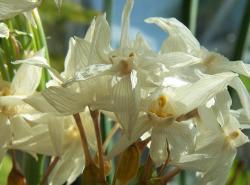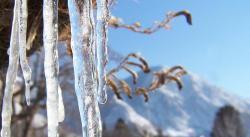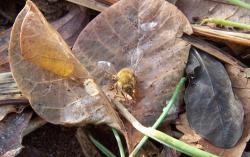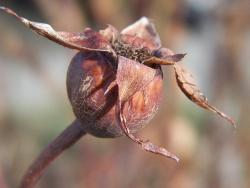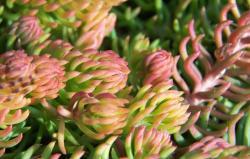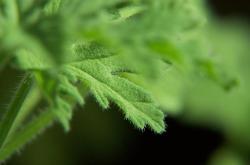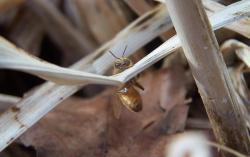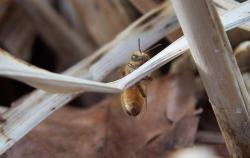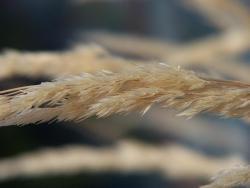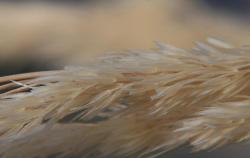dave said:
Asa, question. I have a magnifier kit. It includes 4 different ones: 1x,2x,4x and 10x. Are these magnification values? I see people using a 4x with a 2x or a 1x with a 2x. What's the benefit to mixing and matching these? Is there a particular stack that's the best? Is it good to use a 10x over a 2x? I'm kind of confused as to which ones I really should be using. With 4 different powers there are 24 possible combinations.
I've spent a few days screwing around with answers to these questions - and I'm having a hard time figuring out how to answer them (because there are sooooooooooo many variables). Really, the concepts are worthy of their own thread and as soon as I can figure out the narrative and how to explain things in a way that's pretty easy to parse/digest (and take the accompanying shots), I'll write that thread. In the mean time:
dave said: I have a magnifier kit. It includes 4 different ones: 1x,2x,4x and 10x. Are these magnification values?
No. They're "diopters". From
http://dictionary.reference.co...:
noun
1. Optics. a unit of measure of the refractive power of a lens, having the dimension of the reciprocal of length and a unit equal to the reciprocal of one meter.
And that, of course, invokes some pretty complicated math/physics (relative to the lens (and distance of the lens from the photo sensor)). So...for the sake of simplicity, think of the +1, +2, etc. as relative units of measurement (relative to each other on the lens to which you attach them). +4 is twice as strong as +2, but that doesn't mean that it will double your outcome (because the original lens is still in play with the math/physics). If you think of them in relative terms and make the question practical rather than conceptual, it's easier to think about - in that the question ought to be "what gives me the best results?" (or results that I need relative to the subject)
dave said:What's the benefit to mixing and matching these?
As you note, there are a variety of combinations that you can come up with using this set of four. And recall that we're interested in results. So, the benefit of stacking +1, +2, +4 (for a total of +7) is taking that one particular shot that absolutely requires a +7 on the front of your lens. The downsides of stacking (or even using the magnifiers at all) can be numerous, though. The glass in these magnifiers is of lower quality, produced at looser tolerances, and coated using poorer materials (if coated at all) - when compared to even the most inexpensive branded (dedicated) lenses. So there's the quality issue. Further, glass eats light. So the more glass you put in front of the lens, the less light makes it to the sensor. Also, the more you stack, the more likely you are to introduce dust, fingerprints, etc., into the shot. Keeping one (one-sided) lens clean is hard enough - adding six more sides to maintain is a problem multiplier. Finally, (and back to the first point), the more magnifiers you stack, the more likely you are to have color and shape aberrations show up in your photos.
That all sounds bad, right? It really is, conceptually. But...thinking results here, it's absolutely possible to stack several of these magnifiers together to create fantastic shots. You just have to account for the variables that you're introducing (which is another conversation completely and is really conceptual - practically, you can take good shots stacking...and can recognize the keepers, of course).
dave said:Is there a particular stack that's the best? Is it good to use a 10x over a 2x? I'm kind of confused as to which ones I really should be using. With 4 different powers there are 24 possible combinations.
Flip answer: depends on what you're shooting. Figure it out.
Conceptual answer: Macro photography is defined as shooting the subject at a 1:1 ratio (with the first value being the size of the film/photo sensor and the second value being the size of your target). So...practically, that means at 1:1, if you took a picture of a U.S. Quarter Dollar coin, it would fill the screen/viewfinder/photosensor. It also means that if I wanted to take a true macro shot of a 6" peony, I'd have to take 36 1:1 shots and stitch them together to make the whole photo. That's impractical and absurd. Or I'd have to take 4 shots of a 2" rose for a "macro" of the rose. Not particularly useful when it comes to very many blossoms/plants that we photograph. So I'd need to shoot the peony at 1:6 to fill the photo sensor and the rose at 1:2 to fill the photo sensor. But, by the same token, if I wanted to fill the screen with an amaryllis anther the size of a grain of rice, I'd have to shoot at 6:1 to frame it that way. It really depends on your subject.
Practical answer: A standard 50mm lens on a normal DSLR shoots at about 1:6. That will shoot the peony in a close-up fashion (filling the screen with the blossom) but won't do a 2" rose justice (for a close-up shot). And that's the basis of the discussion - how to get more out of your existing lenses simply and inexpensively.
My vote for the "best" setup is +6 (+4 and +2 stacked - and conventional wisdom says put the stronger lens nearer the sensor) on a ~50mm lens. At the nearest focus (at about 4" away from the subject), that will give you the ability to shoot at about 1:2 and at infinity (6" away from the subject) that nets about 1:3. (And it's really important to point out that when you add a magnifier to your lens, you lose the ability to focus at infinity...it becomes scoped/bounded. See illustration above for visual/practical example - you end up with a slice in which the camera can focus). With the +6 setup, you're filling the screen with ~2-3" of subject at a distance of 4-6" from the subject.
My vote for "next best" setup (and remember, it depends on what you are shooting) is a straight +4 on a ~50mm lens. At the nearest focus (~5.75" from the subject), you are shooting at about 1:2.65 and at the farthest focus (infinity), you're at about 1:4.8 at ~9.5" from the target.
One of these days, I'll post a thread with these (and other) figures included - as well as examples. There's waaaaaaaaaaaaay more to macros, close-ups, and magnifying lenses than I've posted here (and oh, how I've tried to be brief).
Super-best setup: I don't have the words to describe how much better than "best" this really is - but it takes SO many of the variables out of the mix:
The thread "Budget close-ups - Adding a flash to the mix" in
Photography Tips & Techniques forum
This technique can be used with +4 and +6 magnifier setups...and until you try it, you just won't believe how easy and useful it is...even in good light.
Finally...a kit similar to the one that Dave mentions is available from Amazon for about $10.00. If it were me (and it was), I'd get one for my 18-55mm kit lens (and/or my 50mm prime)
AND my 55-300mm (or in Vickie's case 75-300mm) lenses. I think you'll be glad that you have one for each lens. It really depends on what you're shooting...and with a larger zoom, you can achieve results (use a tripod) that are greater than 1:1 for those really, really close-up shots.
More to come as soon as I can figure out how to make the rest of it make sense...but I hope that answers the questions in ways that make sense.


